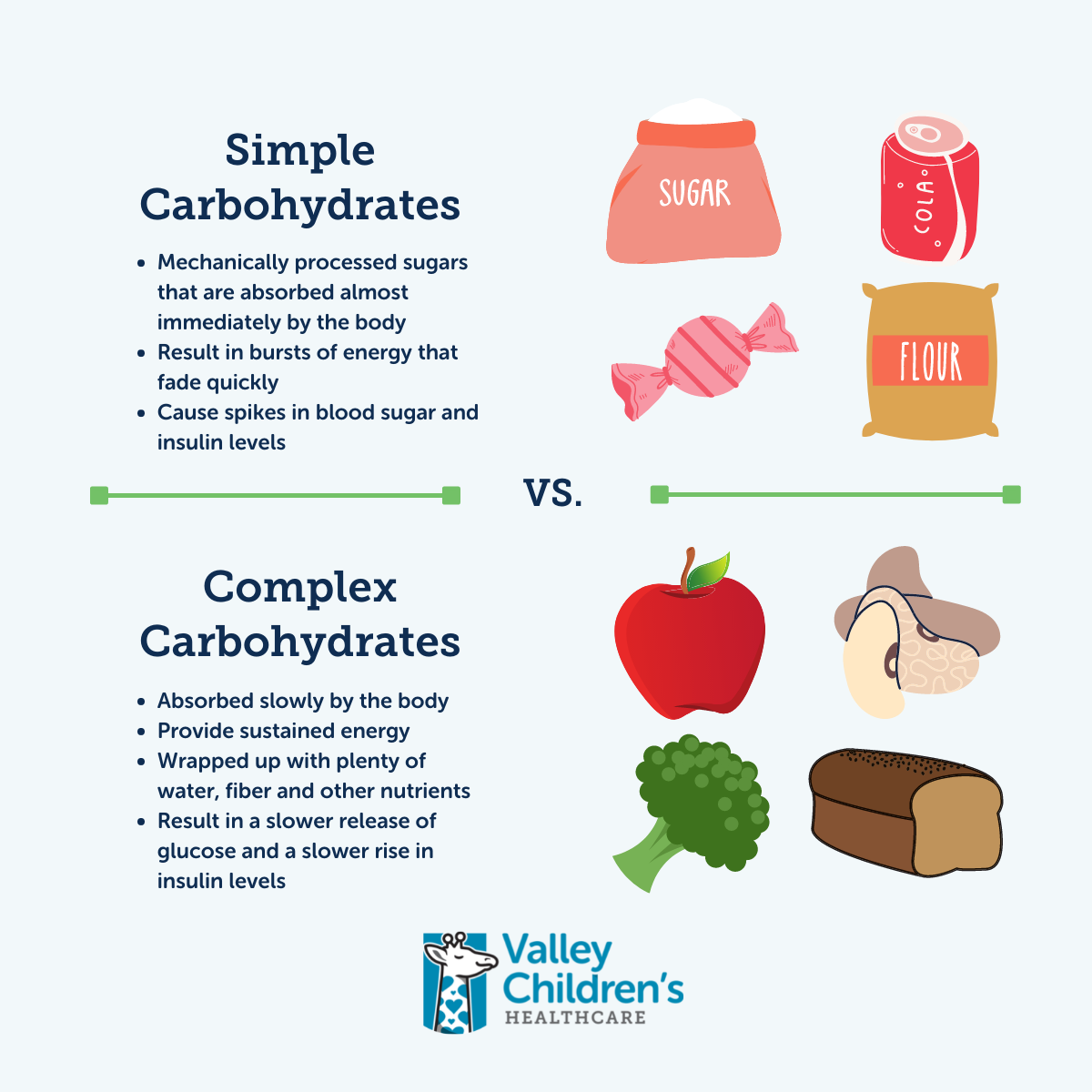Fact or Fiction? Busting Common Misconceptions about Healthy Foods and Beverages
March 24, 2022Categories: Wellness and Prevention, General Information
Childhood obesity rates are at alarmingly high levels both locally and nationally. According to the CDC, childhood obesity rates have tripled since the 1980s, with nearly one in five youth in the United States meeting criteria for obesity. It’s important to recognize and manage obesity as soon as possible because it can lead to severe health complications such as diabetes, high blood pressure and high cholesterol. As mentioned in a previous blog post, healthy eating can help reduce obesity and prevent children from developing these obesity related health complications.
To overcome childhood obesity, children and adolescents should get 60 minutes or more of daily exercise coupled with a healthy diet. However, when it comes to healthy eating, there is a lot of misinformation about healthy versus unhealthy foods. These food myths can lead to deceivingly unhealthy food choices. In this blog, we will focus on clearing up some common misconceptions about healthy foods and drinks.
Common Myths about Healthy Eating
Click on a healthy food or drink "myth" below to learn more.
Some families think clear sodas are better than colored sodas because there is less food coloring, but the truth is all sodas are packed with sugar that our bodies do not need. One 20-ounce bottle of soda contains 64 grams of sugar – that’s 16 teaspoons! Simply put, soda is never a healthy option for a healthy diet.
Fruit juice is a popular drink for families; most people believe juice must be healthy because it comes from fruit. Unfortunately, the truth isn’t so sweet. Fruit juices are high in fruit sugar (fructose) without fiber (which is the beneficial part), so you can gulp down large quantity of sugar before even knowing it. When large quantities of fructose reach the liver, the liver uses excess fructose to create fat and increases the risk of developing fatty liver disease. We recommend families primarily drink water and limit juice intake because the sugar in juice can be addicting if children begin drinking large amounts of juice at an early age. If your family drinks large amounts of juice, be sure to encourage good dental hygiene to avoid cavities.
Many people think drinking fruit juice gives them a boost of Vitamin C and fiber, but unfortunately, these benefits pale in comparison to the amount of sugar you also take in when you drink fruit juice. To get the benefits of Vitamin C and fiber – and a whole host of other vitamins and minerals – without all the added sugar, we recommend eating fresh fruit rather than drinking juice.
Sports drinks are extremely popular, especially if the children in the family participate in sports. While being active is a great way to promote a healthy weight, sports drinks are not a great choice for most children because they can be full of sugar. We strongly encourage families to hydrate their children with water instead of sports drinks due to the unnecessary sugar intake.
Carbohydrates are essential to a child’s growth and should be enjoyed with each meal, in moderation, so they shouldn’t be cut out entirely. Instead, we recommend incorporating more complex carbohydrates – like whole wheat bread, flour, pasta, and oats – into your family’s diet. If you or your child has certain health risks, like diabetes, discuss how to moderate your carb intake with your primary care doctor.

Many granola bars and yogurts are examples of sources of carbohydrates that may seem healthy but can actually be loaded with added sugar. Just because the label includes phrases like “low fat,” “high protein,” or other health claim does not mean there are no other additives, so take a look at the nutritional label for more detailed information on calories, fats, added sugars, fiber, and nutrients.
Many families do not buy fresh fruits and vegetables because they go bad quickly before families have time to eat them. The good news: canned and frozen fruits and veggies can be just as healthy as fresh fruits and vegetables! When you buy canned or frozen fruits and veggies, it’s important to look at the labels to make sure there are no added salts or sugars. The label for canned fruits should say that the fruit is “100% in their own juice,” or that it has no added waters or sugars. The label for canned vegetables should say “no salt added.” If the labels include these sections, they are just as good as fresh and can be an easy way to make sure your kids are getting their daily fruits and vegetables. Frozen fruits and veggies are a great option for many families because they are packaged at peak freshness, are incredibly cost-efficient, and last for a long time.
There are many misconceptions about healthy foods and drinks out there, and it’s sometimes hard to tell the difference between what’s fact and what’s fiction. Your best bet is to always make sure your grocery cart – and your plate – is balanced with healthy fruits and vegetables.
About the Authors
Dr. Brandon Ang, Dr. Harrold Navea, and Dr. Maryam Hockley are second-year pediatric residents with Valley Children’s Pediatric Residency Program.
In this approach to care, Dr. Ang aims to form partnerships with his patients and families and empower them through education. Dr. Navea believes that preventative health – including regular doctor visits, immunizations and education – is a vital component of pediatrics. As a pediatrician, he strives to lead by example and promote active and healthy lifestyles with the goal of helping children and teens avoid preventable diseases. Dr. Hockley's care philosophy centers on equity and justice: “Above all, I want my patients to know me as their ally and advocate, standing beside them on their road to health, from all walks of life, backgrounds, and circumstances.”